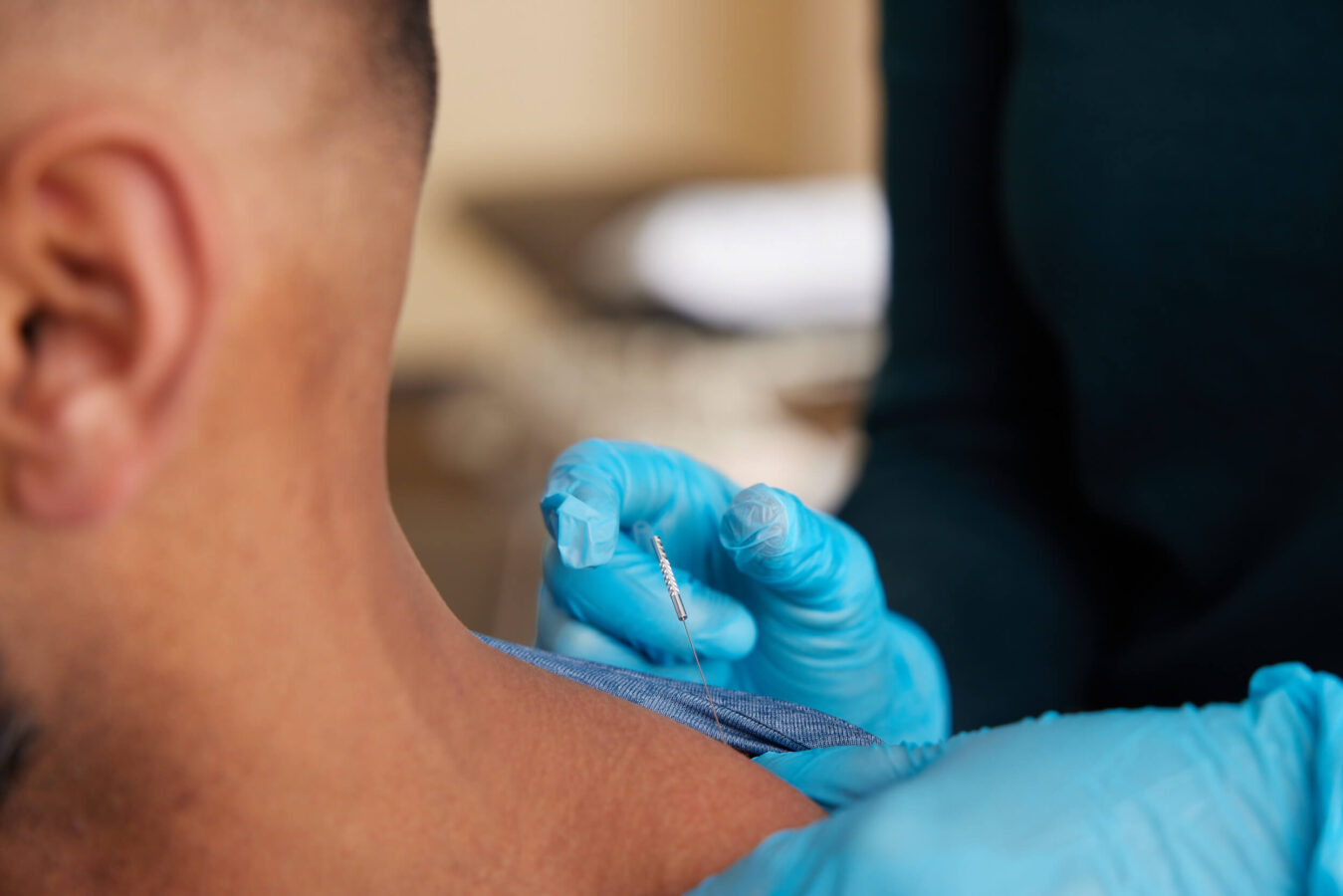
If you have sore, tight, painful muscle knots, you may benefit from a procedure called dry needling. Performed by a skilled, licensed physical therapist, dry needling is the insertion of thin, sterile needles into muscular trigger points to release tension, reduce pain, and improve function. If you have ever wondered, how dry needling works, we are here to answer your questions. Keep reading to learn how this treatment improves the lives of patients with painful musculoskeletal conditions.
Physical therapists always look for new and effective ways to help patients move and feel better. Dry needling is one of these emerging modalities. It is a minimally-invasive physical therapy treatment that directly targets painful trigger points throughout the body.
Trigger points are tight bands that form in the muscle, generally from injury or overuse. Anxiety and stress can also create muscle knots in individuals who tend to clench their muscles. Over time, that repetitive, prolonged muscle contraction causes tight bands of skeletal muscle within larger muscle groups to form.
Trigger points can be painful to the touch and cause referred pain in other parts of the body. Without treatment, these areas of muscle contraction can impact our ability to perform everyday tasks and activities. Sleep can also be affected by painful muscle knots. Dry needling directly targets these trigger points to release and inactivate them to lower pain and enable muscles to move more smoothly.
Physical therapists with specialized certification in dry needling perform this procedure, typically in conjunction with other treatments. During a dry needling session, the physical therapist inserts short, fine, filiform needles into the skin and into muscular trigger points. (The procedure is called “dry” needling because these needles do not inject fluid into the body.)
These therapeutic needles remain in place for a brief amount of time, usually anywhere from 10–15 minutes. Dry needling causes the muscle to release and relax. It also causes neurochemical changes that stimulate the production of endorphins which helps to relieve pain. The body’s “healing response” also activates as nutrient-dense blood flow to the area increases, stimulating tissue repair.
If the patient tolerates the needles well, the physical therapist may gently turn or lift the needles to increase the benefits of the procedure. Some patients experience mild pressure or a pin prick sensation as the needles are inserted. Some patients don’t feel anything at all.
As the needles reach the trigger points, patients may have involuntary muscle twitching or sensitivity, but they shouldn’t have any pain. A drop or two of blood, bruising, and minor soreness at the treatment area are also possible after dry needling. Multiple dry needling treatments are recommended to achieve optimal results.
Dry needling is used to treat pain and movement problems caused by a variety of musculoskeletal conditions:
Because dry needling is relatively “young” compared to other forms of physical therapy, research on its efficacy is limited. However, early studies on the benefits of dry needling are promising. They suggest the technique is beneficial for reducing pain, increasing mobility, and improving overall quality of life. Dry needling seems to be especially effective when combined with other non-invasive treatments like exercise and stretching.
Insurance coverage for dry needling will vary from plan to plan. During the patient intake process, our team will help you understand what is covered based on your unique insurance plan. We also offer flexible self-pay options for patients. For more information about dry needling insurance coverage, visit our Insurance and Costs page.
Pain is our body’s way of telling us something is wrong. But that doesn’t mean you have to get used to living with pain. Are you interested in learning more about dry needling for pain management? Find a physical therapy clinic near you, or request an appointment online today.
